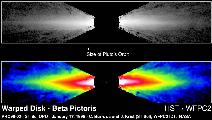
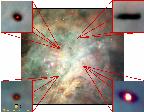
Support for the protoplanet hypothesis has been found by the detection of disk material around of stars, such as Beta Pictoris and by Hubble images of the Orion Nebula.


Doppler Detection:
Doppler spectroscopy is used to detect the periodic velocity shift of the stellar spectrum caused by an orbiting giant planet. This method is also referred to as the radial velocity method. From ground-based observatories, spectroscopists can measure Doppler shifts greater than 3 m/sec due to the reflex motion of the star This corresponds to a minimum detectable mass of 33 Earth masses for a planet at 1 AU from a one solar-mass star.
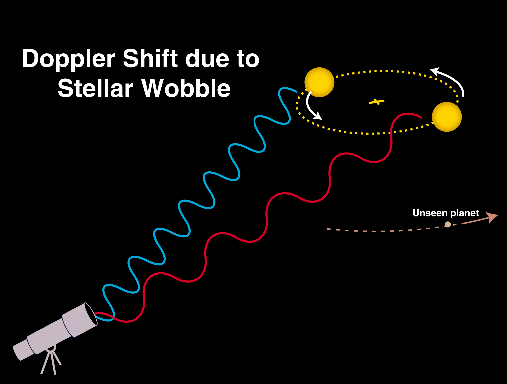
All stars exhibit some Doppler shift because all stars are moving in the gravitational field of our Galaxy. But the stars that move toward us, then away from us, then toward us again wobbling with periodic motion are gravitationally bound to another object. The magnitude of this changing velocity, together with the period of the motion, reveals the mass of an invisible companion to a visible star. Our Sun moves with a speed of about 12 meters/sec due to the most massive planet in our Solar System, Jupiter. The periodicity of the Sun's motion is the same as the orbital period of Jupiter: one cycle takes about twelve years.
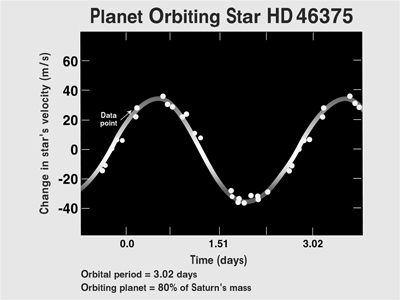
Transit Method:
A more direct measure occurs is a planet transits across the front of a star, as happened with HD 209458, a distant planet passing in front of its star, providing direct and independent confirmation of the existence of extrasolar planets.

Astronomers predicted the planet would cross the face of the star if the planet's orbital plane were lucky enough to carry it between Earth and the star. Until now, none of the 18 other extrasolar planets discovered has had its orbital plane oriented edge-on to Earth so that the planet could be seen to transit the star, nor have any of the other planets discovered by other researchers. However, on Nov. 7, 1999 an automatic telescope observed a 1.7 percent dip in the star's brightness.

With the orbital plane of the planet known, the astronomers for the first time could determine precisely the mass of the planet and, from the size of the planet measured during transit, its density. Interestingly, while the planet's mass is only 63 percent of Jupiter's mass, its radius is 60 percent bigger than that of Jupiter. This fits with theories that predict a bloated planet when, as here, the planet is very close to the star.
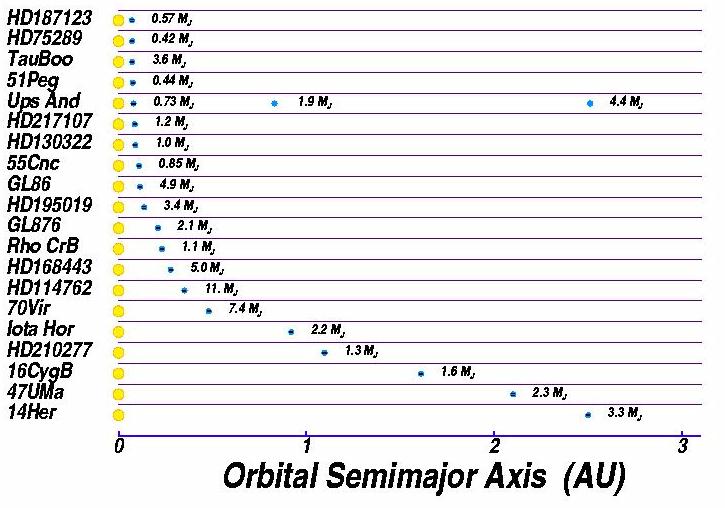



Habitable Zone:
One of the main ingredients for life as we know it is liquid water. Water exists as a liquid between 273K and 373K (unless the pressure is too low, in which case the water sublimates into gaseous water vapor). The region on the solar system (or any planetary system) where the temperature is in this range, is called the habitable zone.
Planets are in equilibrium with their surroundings: they are neither getting hotter nor colder. All planets absorb incident radiation from the Sun (this heats them up); to maintain equilibrium, they must radiate away the same amount of energy. The temperature of a planet can be approximated by assuming that it is a black body.
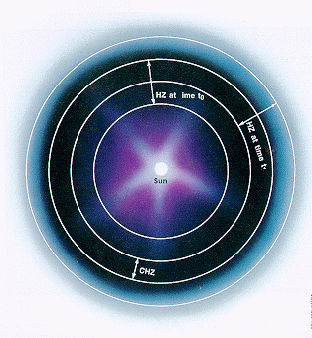
Planets do not absorb all incident light; much gets reflected. The albedo is the fraction of incident light reflected, not absorbed. The albedo of the Earth is 0.37; that of Venus is 0.65; that of the Moon is about 0.12 (cloud is highly reflective, basaltic rock is not). You must multiply the solar irradiance by the albedo. This extends the inner edge of the habitable zone inwards
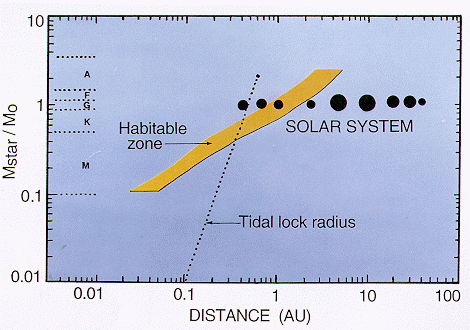
Another complication is that planets are not ideal black bodies. Carbon dioxide, water vapor, and other atmospheric gases are opaque in the near-IR (where the peak of the black body emission would be). A less-than-ideal radiator must be hotter than a black body to radiate the same amount of luminosity. This extends the outer edge of the habitable zone outwards.